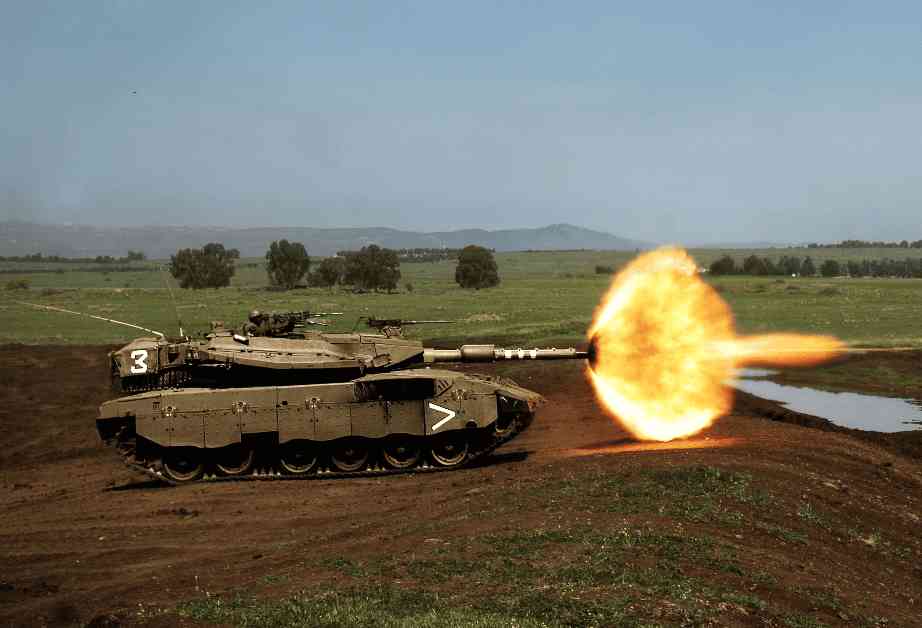The burst of light you see in the image of the Merkava IIId Baz tank is called a muzzle flash. This powerful and brief discharge is created when a tank’s gun is fired, igniting propellant gases that exit the barrel at high speed, resulting in a dramatic flash of light. Tanks, with their large caliber guns, exhibit a more pronounced muzzle flash compared to firearms.
Muzzle flash can be broken down into five components:
1. Muzzle Glow: A reddish glow visible before the bullet exits the barrel, created by superheated gases.
2. Primary Flash: Bright flash caused by superheated propellant gases behind the projectile.
3. Intermediate Flash: Reddish disc-shaped flash caused by shock waves from escaping gases and projectile.
4. Secondary Flash: Large white or yellow fireball farthest from the muzzle caused by ignited ejecta.
5. Residual Sparks: Unburnt powder or other materials ejected after the flash dissipates.
The muzzle flash not only showcases the power of a tank but can also be a challenge for the shooter. In handheld guns, it may temporarily blind the shooter, while in tanks, it creates a distinct signature detectable using infrared imaging technology. Efforts are underway to develop technology that can detect enemy muzzle flashes before the projectile hits its target.
In addition to the visual spectacle of a muzzle flash, understanding its components and effects provides insight into the mechanics and challenges of firing a tank’s gun. The intricate interplay of gases, shock waves, and ignited materials contributes to the awe-inspiring display observed in muzzle flash photography. As technology advances, further research into muzzle flashes may lead to improved detection methods and increased operational effectiveness in military settings.

